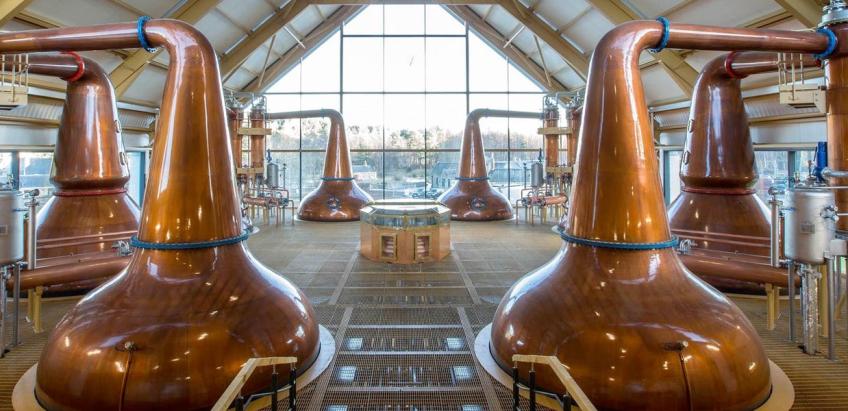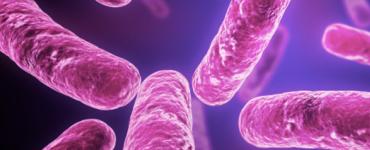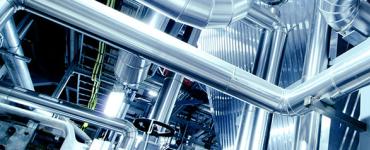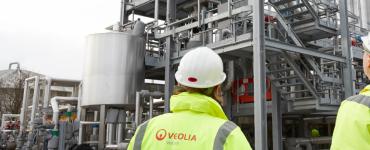- Home
- Latest News
- Whisky Galore

Whisky Galore
Low waste water discharge limits met at the Macallan distillery
The Macallan is one of the world’s leading single malt Scotch whiskies and its owner, Edrington, has invested more than £100m in a new distillery and visitor centre in Craigellachie, Moray.
Due to the worldwide popularity of The Macallan, the existing distillery has been working beyond its original planned capacity, and so Edrington planned a significant upgrade to the site’s wastewater treatment system.
In 2012, The Macallan commissioned Veolia Water Technologies to review the current plant operating data, to characterise the wastewaters produced at the distillery and complete a feasibility study to set a design basis for a new wastewater treatment plant. The technologies which were under consideration included chemically assisted sedimentation, conventional anaerobic technology, anaerobic membrane bioreactor (AMBR), aerobic moving bed biofilm reactor (MBBR) and aerobic membrane bioreactor (MBR). After review, The Macallan awarded a £2.5m contract to Veolia for a new treatment plant based on IdraflotTM dissolved air flotation (DAF) unit followed by a BiosepTM membrane bioreactor (MBR) with a future option to treat the MBR permeate by reverse osmosis for re-use in the distillery as boiler make-up.
The well proven BiosepTM MBR uses a conventional activated sludge aeration reactor followed by an ultrafiltration (UF) membrane barrier to separate the treated effluent from the sludge. This prevents the passage of particles, bacteria and even large organic molecules ensuring a very high quality, disinfected discharge. The retention of large organic molecules means that they have a longer residence time in the aeration tank which helps to break down otherwise recalcitrant species. The modular nature of the UF membranes allows for simple future upgrading, should The Macallan decide to increase spirit production in the future. Also the treated effluent is of sufficiently high quality that it could be reused straight for some cleaning operations, or treated directly by reverse osmosis to generate high quality permeate which can be used in many areas as an alternative to potable water – a step that the distillery hope to take in the future to reduce their water footprint.
The experience gained by working closely with The Macallan meant that Veolia’s engineers could design the new plant with a high degree of confidence. Scaling up the data obtained during the wastewater characterisation study gave the design parameters in Table 1.
TABLE 1 – DESIGN BASIS FOR NEW WASTEWATER TREATMENT PLANT
|
Parameter |
Units |
Average |
Peak (95%ile) |
|
Flow |
m3/day |
320 |
474 |
|
COD |
mg/l |
4,884 |
8,409 |
|
COD |
kg/day |
1,595 |
2,691 |
|
TSS |
mg/l |
828 |
2,153 |
|
pH |
6.3 |
9.5 |
|
|
Copper |
mg/l Cu |
2.5 |
5.4 |
|
Temperature |
°C |
33 |
21 - 45 |
The first step in the treatment process, which is shown schematically in Fig 1, is an elevated rotary screen to remove any coarse solids (Draff) which then gravitate to the sludge tank for off-site disposal. The screened wastewater flows into a 500m3 balance tank (pictured right) fitted with pumped mixing to even out fluctuations of flow and load, allowing a more consistent feed to the downstream DAF and MBR stages. High pH wastewater is automatically diverted to a holding tank from which it is bled back into the treatment process under automatic control to reduce chemical consumption. To protect the downstream process a second divert tank receives wastewater with high alcohol concentration. The balance tank also receives waste biological sludge from the BiosepTM MBR which is also treated by the DAF unit to reduce the volume of sludge to be taken offsite.
Balanced wastewater is passed to the IdraflotTM DAF unit where chemicals are added for pH adjustment, coagulation and flocculation to remove 80% of the suspended solids and 30% of the copper. The resulting sludge is separated by flotation, skimmed from the surface and transferred to a holding tank for off-site disposal. Clarified wastewater continues to the 1100m3 MBR aeration reactor where the BOD, COD and ammoniacal nitrogen are biologically degraded by mixing with recycled activated sludge from the UF units. The resulting “mixed liquors” are retained in the aeration reactor for up to 60 hours, whilst air is injected via fine bubble diffusers to maintain mixing and provide the oxygen necessary for biomass metabolism. Additional nutrient can be added to the aeration reactor as required to maximise biological performance. The mixed liquors are fed to two streams of ultrafiltration, each consisting of a membrane tank with two submerged UF membrane cassettes. Each stream is capable of 50% flow so that treatment can be continued through one set of membranes whilst the other is being chemically cleaned. The ultrafiltration process separates the biomass from the mixed liquors and returns most of it to the aeration reactor, but with a controlled extract of waste sludge to the balance tank. The ultrafiltrate, which passes through the membrane, is currently discharged via a monitoring station for flow, pH, temperature, turbidity and total organic carbon (TOC), to the River Spey although there is an option for the future installation of a MegaROTM reverse osmosis plant for recovery.
Figure 1 WwTP Process Block Diagram
All the tanks including the aeration reactor were fabricated in stainless steel sections and constructed on site. Installation was completed in the summer of 2015 and the new plant was put into operation in September 2015. Veolia’s Contract Manager, Stuart MacBeath said: “The operational knowledge gained by working so closely with The Macallan during the study stage really helped us in the selection of the right equipment and to understand the best method and time to introduce the new system and to start to decommission the existing plant”. He had only one real concern: “It can get cold in this part of Scotland in the winter”, he says, “and we decided that the plant should, as far as possible, be enclosed inside a building to protect the equipment, not to mention the plant operators, from sustained outside temperatures as low as -25°C.” Edrington’s UK Engineering Manager, George McKenzie, is pleased with the result. “Based on Veolia’s experience we expected to achieve a good quality discharge – certainly well within the consent limits – and that we have done”, he says. “In addition the new plant has a much higher level of automation which means reduced operator involvement.” In fact the performance averaged over the last three months, was better than expected, as Table 2 shows. The new wastewater treatment plant at The Macallan distillery has delivered a system that meets the legislative requirements of SEPA’s consent and can be easily uprated to meet future production expansion. It also has the potential for reducing the distillery’s water footprint and water costs by recycling high quality treated wastewater as a partial replacement for main water.
TABLE 2 – DISCHARGE
|
Parameter |
Units |
Consent |
Achieved |
|
|
COD |
mg/l |
36 |
||
|
BOD |
mg/l |
50 |
5 |
|
|
TSS |
mg/l |
185 |
28 |
|
|
NH4-N + TON |
mg/l N |
35 |
7 |
|
|
Copper |
µg/l Cu |
500 |
311 |
|













